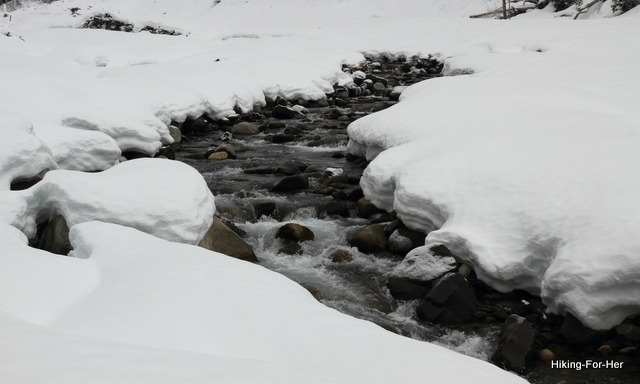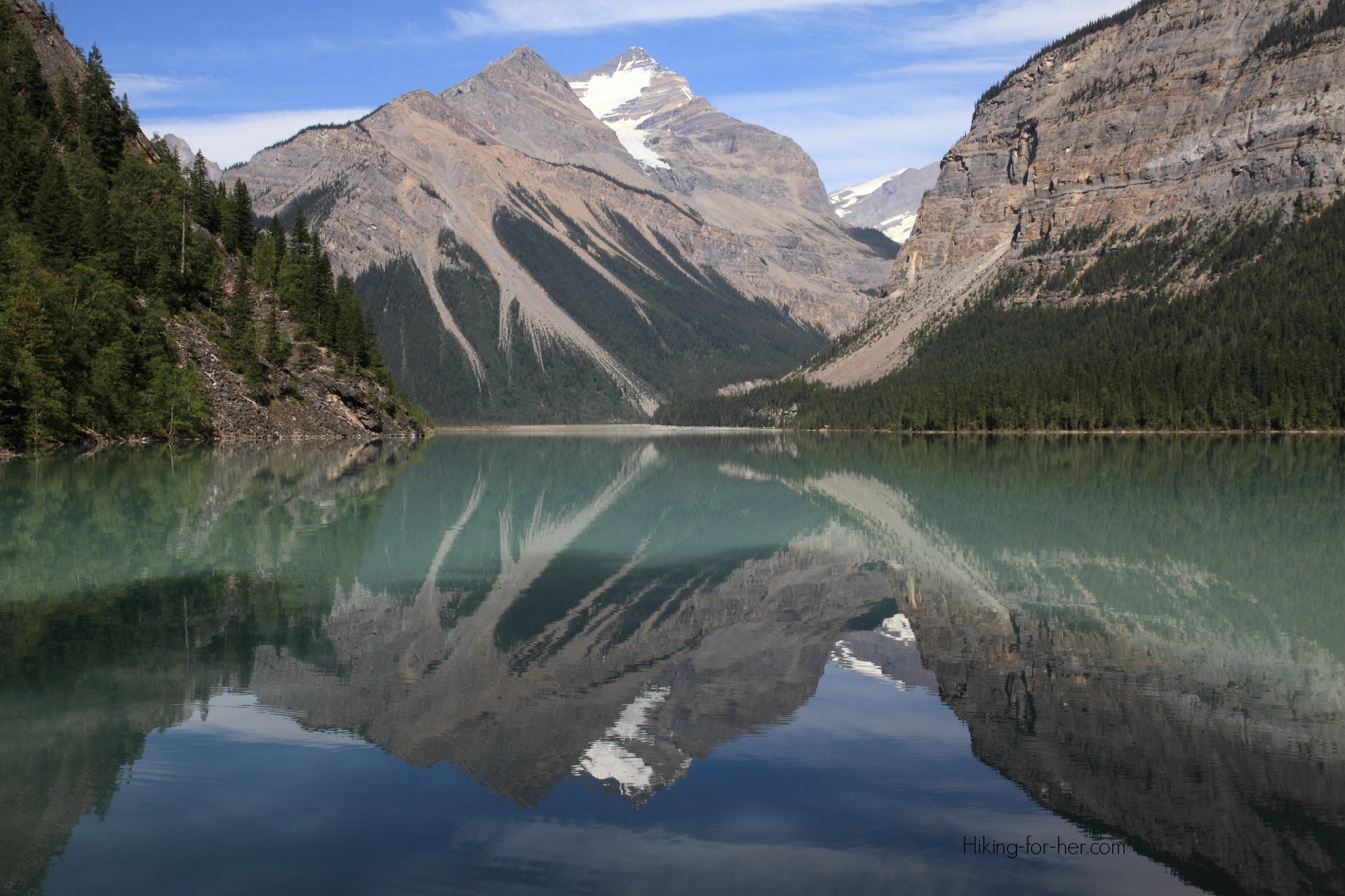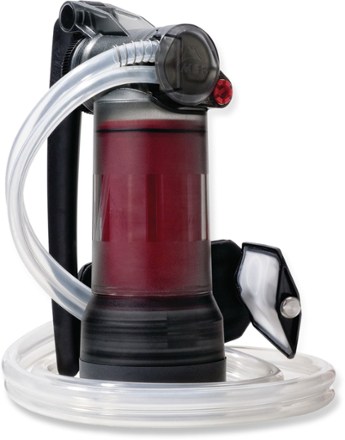
Waterborne Hiking Illness:
How To Avoid Trouble On A Hike
By Diane Spicer
Waterborne hiking illness: that's a mouthful, any way you swallow it.
There are certain things you must never do as a hiker.
On this short list: Swallow contaminated water.
However, as a hiker you know that you need to consume lots of hiking water. Hydration is the key to a great hike.
Which means you need to know all about backpacking water purification methods.
You're in the right place!
Read on...
What lurks in surface water that looks clean?
A bunch of little nasties with charming names such as Giardia, Cryptosporidium, and Blastocystis.
- Giardia symptoms and treatment need to be in your skill set as a backcountry hiker when you rely on surface water for hydration.
Oh, if only it were as simple as reading a sign, sort of like a warning sign on the highway.
You need to rely on common sense and technology to keep yourself away from waterborne hiking illness.
And every once in awhile, Mother Nature WILL leave you a sign (if you're paying attention).
 Clean, pure water? Or does waterborne hiking illness lurk within?
Clean, pure water? Or does waterborne hiking illness lurk within?
Common sense tips to avoid waterborne illness
Let's briefly review hiking common sense.
Avoid stagnant surface water as a drinking source. Even if you filter this water, it will put more stress on your apparatus, clogging it up and potentially cutting down on its effectiveness.
And it means you'll have to clean your filter more often.
Boiling stagnant water for at least 5 minutes will probably work, but the gunk floating around in it is pretty hard to swallow - visually, at least.
And boiled water tastes flat.
- You'll have to pour it back and forth between pot and bottle several times to aerate it a bit.
Here's a tip from Mother Nature:
Don't drink from surface water with lots of traffic (i.e. footprints, broken branches, obvious signs of disturbance) around it.
- Certain infectious agents (viruses, bacteria, parasites - see below) are carried in human and animal feces.
- Your likelihood
of encountering them increases in high traffic areas.
- So watch for evidence of heavy usage when you look for a watering hole.
Speaking of holes...
If you're using surface water as a swimming hole, don't swallow the water.
Even if only a few people per season use a "pristine" mountain lake, you could be asking for trouble if you don't treat the water before ingesting it.
Technology for clean hiking water
When I first started backpacking in the 1970's, there were two options for ensuring clean drinking water: boil it, or treat it with iodine.
The first option resulted in flat tasting water and a depleted fuel bottle, while the second option was nearly undrinkable.
I'm glad things have come a long way since then!
Nowadays, I carry a water filter.
And a Lifestraw Go filtering water bottle.
And I'm intrigued by the Steripens marketed at my favorite gear store.
But remember, technology is only as smart as your brain.
If you don't use it properly, or blindly believe in it despite evidence to the contrary, things can go very bad.
Take time before your hiking trip to use the technology, and know how to repair or clean it out on the trail.
And having a back-up plan for water purification isn't a bad idea, either. These water purifications tablets, for example.
 Sure looks pretty. But is it drinkable without treatment?
Sure looks pretty. But is it drinkable without treatment?
Waterborne hiking illnesses
How would you know if you picked up a waterborne hiking illness?
- Diarrhea (increased frequency and amount of stool) would be an important clue.
- Fever, cramps, and fatigue might also appear.
Giardiasis, caused by Giardia intestinalis (lamblia), is widespread in United States surface waters.
Giardia is also called "beaver fever" to indicate that wild animals can be reservoirs of infection. Their feces makes its way into potential drinking water for hikers.
Read up on giardiasis so you can avoid this waterborne hiking illness. Or know how to treat giardia in yourself or a hiking buddy if your water treatment methods fail.
Also be able to recognize the full spectrum of giardia symptoms.
Another waterborne illness you really want to avoid
Another waterborne hiking illness you want to avoid is called cryptosporidiosis.
This is also caused by a microscopic culprit, and can make a hiker miserable in the same way we outlined above.
- That link can take you to information on another waterborne parasite called Blastocystis hominis.
- While not as common as the other two, it's definitely one to watch.
More microscopic troubles
Viruses are too small to be handled effectively except by boiling the water for at least 5 minutes (something that takes a long time, and a lot of fuel, at higher elevations).
Or by a really efficient (and expensive) water filter, like this one: the MSR Guardian Purifier.
- Hepatitis viruses are the worrisome ones because some of them can become a chronic infection that is hard for your body to defeat.

Now that you know, stay vigilant as a hiker
Lots to think about in terms of protecting yourself against waterborne hiking illness, that's for sure.
If you're a backpacker, you can use my tips for giving yourself safe surface water on a backpacking trip.
Or keep reading about hiking hydration while you're on a roll!
Home page > Best Hiking Tips >
Waterborne Hiking Illness
|
I get emails all the time about what I wear, eat, carry and love to use on the trail. That's
why I provide affiliate links to you: the best gear that I use myself and have seen used by other hikers is instantly
available for your consideration, and the gear company sends a few
pennies per dollar to this reader-supported hiking website. There is no added cost to you! Everyone ends up a winner: Great gear for you, strong gear companies, and more free hiking tips for everyone. Thanks very much for your support. It's warmly and sincerely appreciated. It also helps send these hiking tips to all your virtual trail buddies around the globe. |
 |

